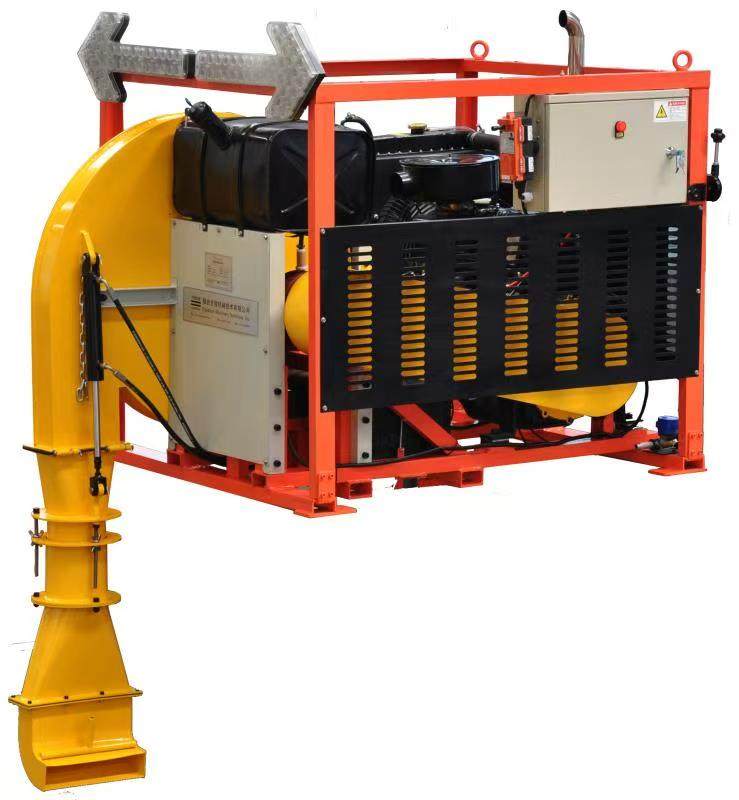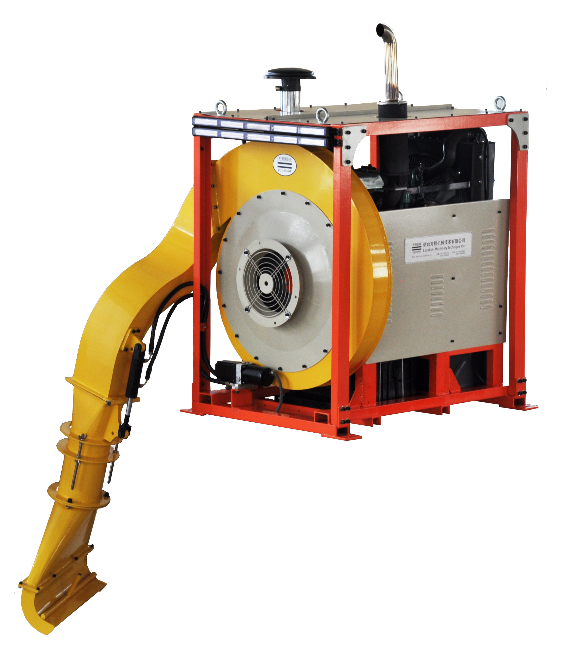Road surface cleaning is an important task in the daily maintenance of highways, typically performed using specialized sweeping vehicles.
Currently, the widely used sweeping vehicles operate on the suction-sweeping principle. They are equipped with an auxiliary engine and a draft fan that creates negative pressure to suck up debris and dust, which is then collected into a dust bin through an air filtration system.
The advantage of these suction-sweeping vehicles is their high effectiveness, meeting the operational requirements of most working conditions. However, they have drawbacks such as slow operating speed, high power consumption, high fuel consumption, high purchase cost, and significant maintenance expenses. Large sweeping vehicles generally operate at speeds of only 2–5 km/h, with fuel consumption as high as 80–100 liters per hour. Their air filters require frequent cleaning, and replacement costs can reach 7,000 to 10,000 RMB or even more.
Around 2020, some companies introduced purely mechanical sweeping vehicles, which gained popularity among many users. These vehicles use a mechanical structure to transfer debris collected by brushes into a storage bin, eliminating the need for an auxiliary engine, draft fan, and air filtration system. This greatly simplifies the structure, significantly reduces purchase costs, and improves energy efficiency. However, in terms of cleaning effectiveness, this type of vehicle is slightly inferior to suction-sweeping models. There is also limited improvement in operating speed, and per-kilometer costs remain relatively high.
In 2018, Yantai Fangcheng Mechanical Technology Co., Ltd. designed a road surface blowing machine, pioneering a new model for road cleaning that quickly gained popularity in the highway maintenance sector.
This blowing machine is mounted on a light truck and powered by a four-cylinder diesel engine. It uses a belt drive to operate a high-pressure fan that generates high-speed airflow for blowing operations. The equipment is also equipped with a water mist dust suppression system and features full remote-control operation. The driver can perform all operations—such as starting and stopping the engine, retracting and extending the air duct, and controlling the water mist—without leaving the vehicle, making it highly suitable for highway working environments.

The blowing machine costs only about 1/10 of a traditional sweeping vehicle, with fuel consumption of approximately 8 liters per 100 kilometers and an operating speed of over 30 km/h, significantly improving economic efficiency.
A drawback of the belt drive system is that it requires frequent adjustment and replacement. In 2021, Yantai Equation Mechanical introduced a direct-mounted blowing machine, where a specially designed fan is directly attached to the diesel engine’s flywheel. This eliminates the entire transmission structure, reduces size, and lowers the weight to 600 kg, allowing it to be carried by a pickup truck.

Since highway maintenance units commonly use pickup trucks for road inspections, this machine enables simultaneous inspection and cleaning, resulting in substantial maintenance cost savings.
Baoqing Li
Dep. of Technology
baoqing@equationtec.com
July 2, 2025